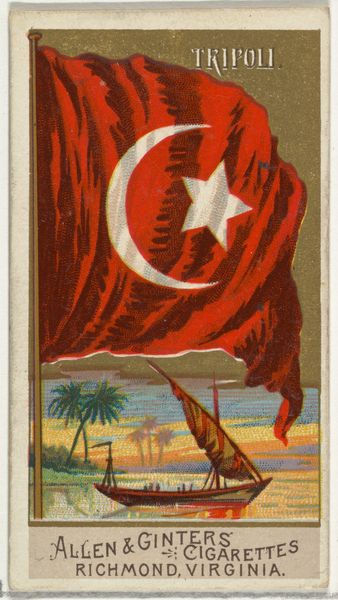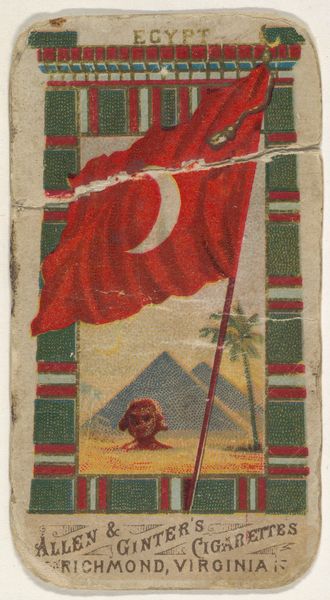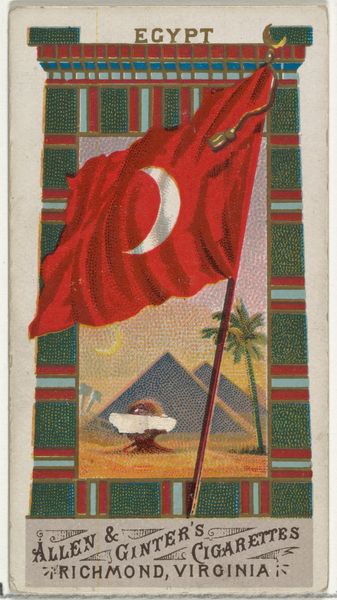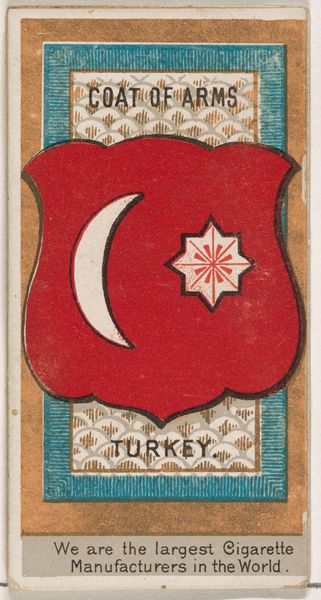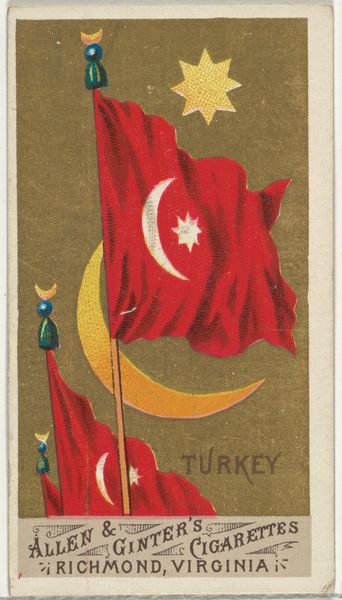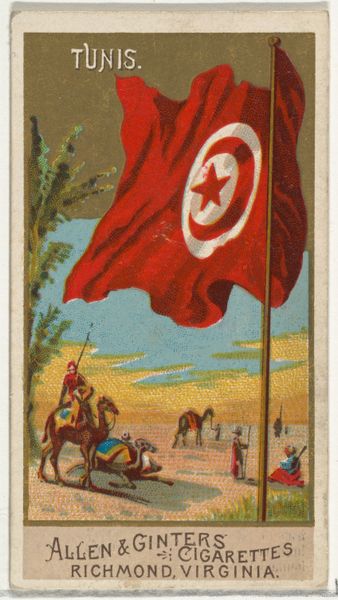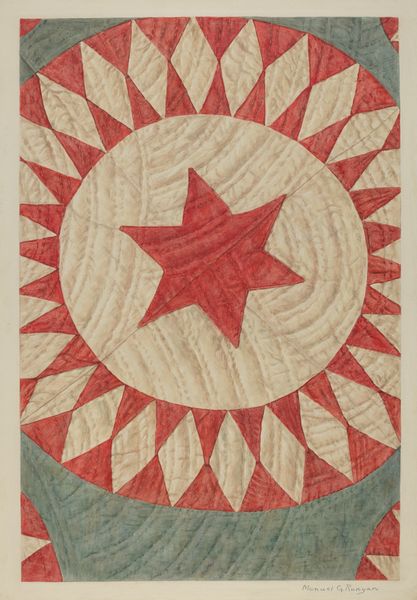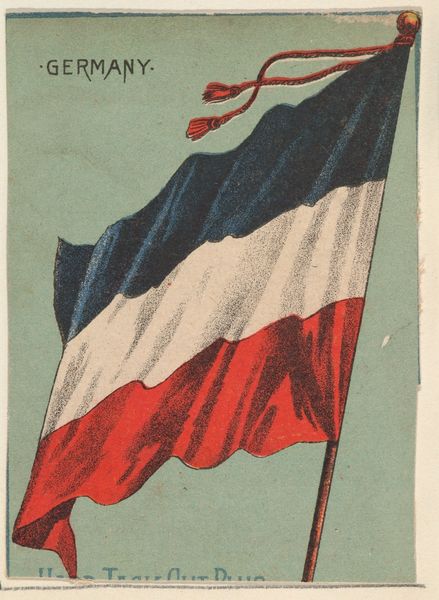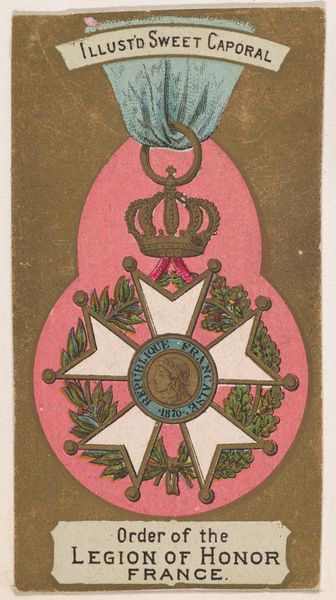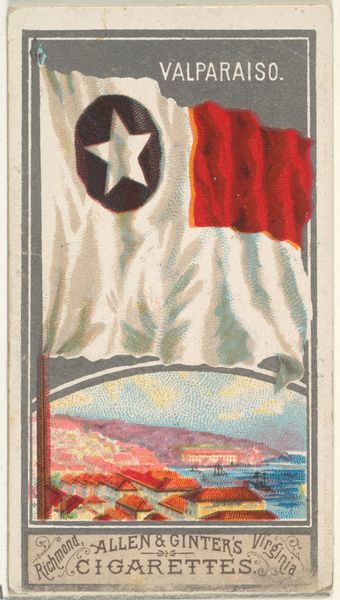
Coat of Arms, Turkey, from the Military Series (N224) issued by Kinney Tobacco Company to promote Sweet Caporal Cigarettes 1888
0:00
0:00
Dimensions: Sheet: 2 3/4 × 1 1/2 in. (7 × 3.8 cm)
Copyright: Public Domain
Editor: This is "Coat of Arms, Turkey," printed around 1888 by Kinney Tobacco Company. It’s from their "Military Series," originally included in packs of Sweet Caporal cigarettes. I'm struck by how flat and graphic it is – almost like a pre-digital advertisement. What's interesting to you about this print? Curator: It's a fascinating artifact. We see here Orientalism manifested in popular culture, circulated through the burgeoning consumerism of the late 19th century. The image itself is a simplified version of the Turkish flag, but packaged and distributed by an American tobacco company. Editor: So, it’s less about representing Turkey accurately and more about… what? Curator: More about selling an exotic image of the “Orient” to American consumers. These cards functioned as collectables, but also as subtle propaganda. The association with a "military series" might even imply a connection between smoking Sweet Caporal cigarettes and strength, or worldly sophistication, achieved through understanding other countries and cultures. Editor: It feels like a very casual, almost disposable form of cultural appropriation. Was that common then? Curator: Exactly. Tobacco companies were not interested in cultural sensitivity; they were interested in expanding their markets. The "Turkish" imagery would have seemed alluring, different, perhaps even slightly dangerous to the average American, helping sell their product through associations. Think about how these images permeated everyday life through mass media; it's crucial to think about their socio-political implications. Who benefits from these images, and whose narrative is lost or misrepresented? Editor: I see, so a simple cigarette card actually reveals a lot about power dynamics at the time. I'll definitely look at these kinds of images differently now. Curator: That’s precisely the point. The art market then, as now, is an intrinsic player within larger fields of production, promotion, and even socio-political influence. I'm glad we’ve made this connection today.
Comments
No comments
Be the first to comment and join the conversation on the ultimate creative platform.
